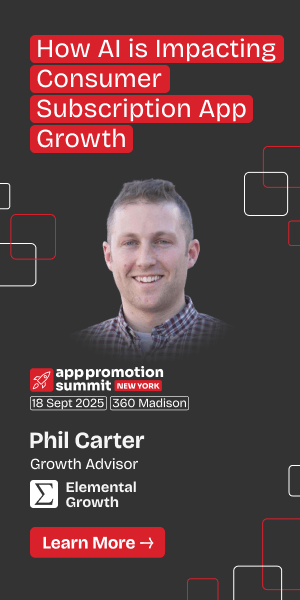
The demand for outstanding software developments continues to be bolstered by the increasingly stiff competition in the markets. Now more than ever, brands need to fine-tune the specifications and details of their software development in line with the business idea to the very best of their abilities.
One of the most critical areas of software development where brands need to tread with great caution is the engagement model. Today, the most widely used engagement models for software development transcend the use of in-house talent and embrace outsourcing and even freelancing.
The results of a survey recently carried out showed that over 53% of businesses outsource their developments to a custom software development company. This bewildering rate at which in-house talent is becoming a second-best option shows how the benefits of transitioning from traditional engagement models to those of outsourcing are greatly appreciated across industries. These benefits range from easier access to a variety of talent to greater control over expenses and reduced time-to-market.
Read the Article: Tips to Choose the Best Developers for your Software Development Project
However, since every software development is invariably unique, there is no one-size-fits-all engagement model that’s perfect for every software development. Every engagement model comes with its own set of advantages and disadvantages that make it best-suited to only certain types of developments. In this article, we dissect the two main types of engagement models, and offer tips for when they’re the best bet for hiring a custom software development company.
The Time and Material Model
Most outstanding applications are products of continuous and consistent refinement and stacking of integrations. This requires a great deal of flexibility in the software development project. The time and material model, which is basically a pay-as-you-go arrangement, enables flexibility, encourages communication, and ultimately leads to software development projects that are very close to the mark of the original business idea.
With its great support for flexibility, this model allows for changes to be made in the software specifications at any point in the development. This model allows you to hire a web development company based in the USA without completely defining the specifications of your software first.
The Pros
- It encourages fluidity, dynamism and flexibility, giving you greater control over the activities of the custom software development company relating to your project.
- You make payments for only what you’ve received.
- It allows for regular granular monitoring and excellent communication between a client and a custom software development company
It gives the client enough time to validate the product before the product hits the market.
Cons
- You must continue making payments until the development is fully complete.
- You will most likely pay a custom software development company much more than you budgeted for initially if you add more features to the project specifications down the line.
- It requires the proactive participation of the client in the development.
- You might fall victim to a company that delays the developments deliberately. But while this model is basically a pay-as-you-go arrangement, there’s usually a proposed time-frame for the implementation of the project’s original set of specifications.
When the Time and Material Model is the Best Fit for a Software Development Project
Since it makes for great flexibility as well as the execution of modular development, this model is great for nearly any kind of software development. However, it’s best suited for:
- Software solutions that need continuous research and refinement.
- Development projects with specifications that aren’t thoroughly defined from the outset.
- Software developments executed via the Agile software development cycle.
- Highly sophisticated software developments that require numerous iterations due to open-ended sets of end requirements, including those of IoT, games and AI-based solutions.
Read the Article: Top Ways to Ensure Effective Web Development
Dedicated Developer Model
This model is also highly beneficial with regards to support for flexible specification requirements as well as greater control over the cost of the development for the client. It’s the best-suited model for long-term projects with evolving specification needs.
When you hire dedicated developers, you take them similar to in-house and then pay them on a monthly basis for the duration of the development. Not only does this save you the cost of recruiting and training new employees, it also saves you from having to put idle employees on your payroll. Also, when you hire dedicated developers, you’re completely in charge of the project. You get to determine the direction and the work plan of the development, and supervise the developers closely.
Pros
- When you hire dedicated developers, you gain easier access to a wider variety of talent and experience.
This model gives you greater control over the use of resources and the time frame of the project. - It allows for close supervision; more like working with in-house developers.
- The final cost remains close to the mark of your budget’s original bottom line regardless of the changes introduced or the mounting workload.
The model negates the need to pay for employee idle time and idle capacity. - It saves you the time and resources for hiring and training new employees for your in-house team.
- When you hire dedicated developers, there’s a stronger sense of loyalty and attachment to both your brand and the product among the developers.
Cons
It requires the heavy involvement of the client in the creation of activity classes, the assignment of tasks and responsibility to different members of the developer team, as well as the overall management of the project.
If you hire dedicated developers to work together with in-house developers, there might be ‘turf wars’ and a covert struggle for supremacy among them.
When is it best to Hire Dedicated Developers?
- For long-term projects that require constant updates and the incorporation of inputs from research.
- When the goals and specifications of the project are not thoroughly articulated at the beginning.
- When there’s a need for talent and more manpower which your current in-house team is short of.
- When you want greater control over the activities of the programmers and the allocation of resources.
Conclusion
A corollary that can be drawn from the above examination of the two most popular engagement models is that the more sophisticated and long-drawn out the development is, the more it calls for the dedicated developer engagement model.
When you contract a web development company based in the USA under the dedicated developers engagement model, you get to work with developers who champion the vision for the software development. Hence, when you hire dedicated developers from a web development company based in the USA, you can expect the developers to handle any new changes or additional integrations with greater efficiency.
When you’re ready to get started, be sure to contact us, and we’ll work with you to make your project a success.
To know more about Software Development Services reach us at +1(770)274-4482 or visit our website Dedicated Developers. Reach us at inquiry@DedicatedDevelopers.com











